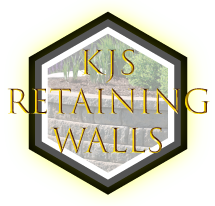GET A QUOTE TODAY




Cement Retaining Walls
Concrete retaining walls are prized for their aesthetic appeal and versatility. Poured concrete retaining walls can be textured with embedded objects and more, making them a great choice for your residential or commercial property. Depending on the design, concrete gave a retaining wall more options when it comes to customization.
The best examples of poured concrete walls can be seen on freeways where these walls are constructed in mass quantities. Watch any of these structures being created and you’ll see the skill put into their creation.
CONCRETE RETAINING WALL PROPORTIONS
A retaining wall is as much the result of structural design as it is proper proportioning. Placing concrete onto a retaining wall means taking care to ensure that the proportions are correct. Furthermore, it will also leave space for any structural reinforcement materials needed. Construction-friendly proportions facilitate proper concrete placement and provide sufficient space for potential reinforcements.
WHAT IS LATERAL EARTH PRESSURE?
Formulating any retaining wall requires knowledge and understanding of the force generated by the pressure from the soil. This force from behind is called lateral earth pressure. To determine the lateral earth pressure, several soil parameters must be known for us to assess a particular wall design and its overall stability. These basic soil parameters include:
Cohesion and plasticity indices (for clays)
Soil unit weight
The water table location
Angle of internal friction (for sands)
Once the lateral pressure from a typical load of dirt on a retaining wall is known, the wall is checked for stability. This includes the risk for wall overturning, base slippage and soil capacity failure. Once the wall is sized, concrete retaining wall panels are checked for adequate strength and steel reinforcing might be needed.
Do retaining walls need cement?
Retaining walls do not require cement in all cases. The most basic of retaining walls, the gravity wall relies on sheer mass to hold an immense quantity of soil in place. As a result, retaining walls can be made with materials like steel, wood or vinyl that are driven into the earth by weight alone. Sheet pile keeping walls get their strength by pushing these thin sheets into the soil and don’t require cement for construction.
Which retaining wall is best?
Poured concrete is the most durable choice for your retaining wall and it may be carved to look like mortared stone depending on your taste. Poured concrete walls are not built to lean against the earth, which can save valuable space if you’re tight on room.
A more do-it-yourself option is to line the walls with interlocking concrete blocks. Although made of concrete, blocks for retaining walls are usually rough on the exterior to mimic quarried rock. Their shape makes them easy to join without the use of mortar. Masonry retaining walls are often made of cement or stone and require a professional mason for installation. These can last upwards of forty years if the construction is sound.
How thick should concrete retaining wall be?
Base thickness = 1/8 of the height of the wall but not less than 12 inches. Stem thickness = 6 inches + ¼ inch for each foot of wall height.
How long does a concrete retaining wall last?
The material you choose for your retaining wall can have a drastic impact on how long it lasts. Concrete is a popular material choice for structures such as pool decks and retaining walls because of its durability. A concrete retaining wall typically lasts 50 to 100 years. Meanwhile, brick masonry walls can expect to last at least 100 years assuming the quality of work is good. We provide a long-lasting retaining wall at an affordable price! We’ll work with you to design the best possible solution for your needs.